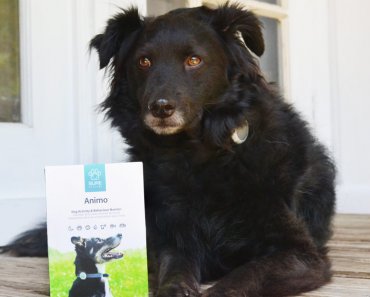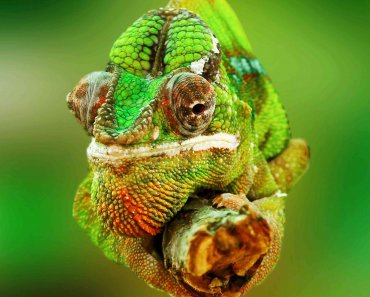This long feathery grass looks beautiful, but foxtail barley seeds have tiny barbs can attach to your dog’s coat and burrow into his skin, ears and nose. Find out how you can protect him.
If you walk or run your dog in rural areas, be aware of a plant called foxtail barley. This tall feathery grass develops seed heads with tiny barbs that can attach themselves to your dog’s coat and work their way into his skin, paw pads, ear canals and nasal cavities. These barbs cause a lot of discomfort, and if they get lodged in deep, surgery may be needed to remove them. Protect your dog by learning how to recognize foxtail barley, and taking steps to prevent contact.
What is foxtail barley?
Foxtail barley (Hordeum jubatum) is a native grass found in a range of habitats throughout North America, including pastures and fields as well as ditches, fencerows, and roadsides, and in disturbed moist areas. The plant can grow up to two feet tall and has a long stem with a feathered, bushy top that resembles a foxtail — hence the name. Foxtail grass is common in California, the southern and western United States, Canada and Mexico.
Foxtail barley can germinate in the spring or fall (depending on where you live). After flowering, the grass gets dry and brown, allowing the seed heads to detach easily. The wind can cause the seeds to scatter – as can a dog or other animal brushing up against the plant.
Armed and dangerous
Foxtail barley seeds are arrow-shaped awns, made up of razor-sharp needles. Nature designed them this way so they can plant themselves in the ground and start burrowing beneath the surface to grow. Unfortunately, they do the same thing if they get on your dog’s skin, or are snuffed up, ingested or land in his ears.
“Because the foxtail is barbed, once it becomes embedded it cannot come out easily,” says Pippa Hutchinson, a clinical companion animal behaviorist. “Should a dog bite the end off, the rest will remain and work its way up and along an opening such as the nasal or ear canal, or through the skin.”
“The most common foreign body found in the external ear canal of dogs and cats is the grass awn,” concurs Richard G. Harvey, author of Ear Diseases of the Dog and Cat. “In the US, the most common species of plant awn is Hordeum jubatum.”
 In 2011, the LA Times reported that the emergency room of an animal hospital in northern California sees 60 to 90 cases a month during foxtail seed season. And in many instances, surgery is required to remove foxtail awns. One man noticed that his dog was continually sneezing after a run outdoors. Upon checking, he saw something in the dog’s nostril. He took the dog to his vet, only to learn that a foxtail awn had attached itself to the inside of the animal’s nasal cavity and needed to be surgically removed.
In 2011, the LA Times reported that the emergency room of an animal hospital in northern California sees 60 to 90 cases a month during foxtail seed season. And in many instances, surgery is required to remove foxtail awns. One man noticed that his dog was continually sneezing after a run outdoors. Upon checking, he saw something in the dog’s nostril. He took the dog to his vet, only to learn that a foxtail awn had attached itself to the inside of the animal’s nasal cavity and needed to be surgically removed.
Protecting your pooch
- The best way to protect your dog from foxtail barley is to keep him away from long dry grasses (this is also a good idea for protecting against ticks).
- Contact your veterinarian or regional agricultural unit and ask if they know of any foxtail barley growing in your area, and/or learn to recognize it yourself. This way, you’ll know which areas to steer clear of when walking or hiking with your dog.
- Check your dog’s coat and face after every outing in or near areas of long grass. Immediately remove any visible seeds stuck to his hair, and take him to the vet as soon as possible if he starts sneezing, shaking his head, scratching, rubbing or chewing right after a walk. The sooner you get veterinary attention for your dog, the easier, less invasive, and less expensive treatment will be.
- If possible, try to keep your dog’s hair short, particularly around his toes, feet and armpits. That way the seeds are less likely to cling to him, and you’ll have a much better chance of spotting them.
- Several companies have come to the rescue with products especially designed to protect a dog’s head and face from foxtail awns. Foxtailfree Hoodies and OutFox Field Guard offer lightweight hoods that cover the dog’s head and face, protecting his ears, eyes, nose and mouth but still allowing him to comfortably breathe, see, sniff and explore. The Foxtail Dog Protector fits protectively over the dog’s ears (the ears are one of the most common sites for foxtail seeds to wind up in).
Though foxtail barley is a pervasive problem, it doesn’t mean you have to give up rambling through the countryside with your dog. Learning how to recognize it and where it grows, and taking some simple precautions, will help ensure carefree walks.
Foxtail protection gear
Foxtail Dog Protector, foxtaildogprotector.com
Foxtailfree Hoodies, foxtailfree.com
OutFox Field Guard, outfoxfordogs.com




























